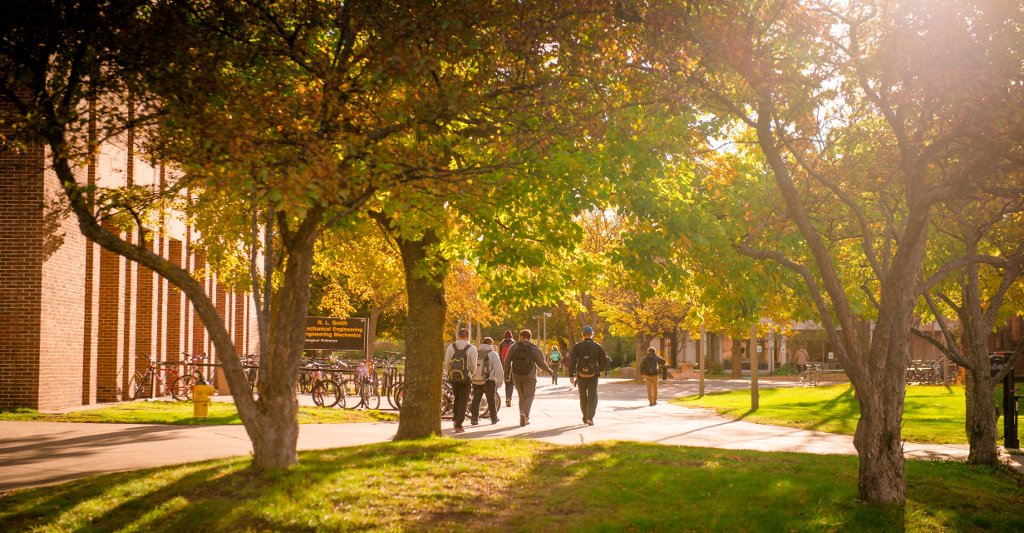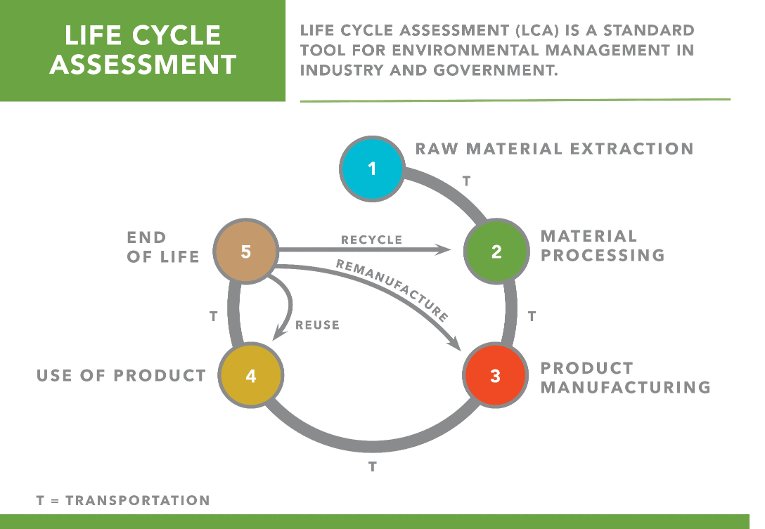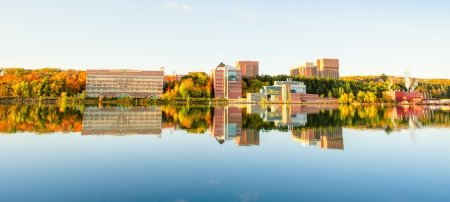In his guest blog, David Shonnard, professor of chemical engineering and Robbins Chair in Sustainable Use of Materials, lays out one of the research tools he uses as director of the Sustainable Futures Institute. It's called a Life Cycle Assessment.
As a Ph.D. student at the University of California at Davis in the Department of Chemical Engineering I was given the freedom to fashion my own program of study, for which I am very grateful. I combined my strong interests in chemical engineering with environmental protection in both my coursework plan and research topic: how chemicals are transported and become transformed in the environment. My career at Michigan Tech is motivated by the desire to combine environmental science with chemical engineering, the goal of which is the design of chemical processes and products with lower environmental impact.
This has led my students and I to use a relatively new method called life cycle assessment (LCA). Most of our LCA projects involve collaborations with innovative companies who are trying to invent advanced biofuel processes, but they don’t know how to use LCA as a way to understand whether their new biofuels match up environmentally with petroleum-based transportation fuels. During the last 10 years or so my research group has published nearly 30 peer-reviewed biofuel and bioenergy LCAs using diverse feedstock from algae to wood, and even more unusual feedstocks such as steel mill off-gas and landfill gas. These studies are endlessly fascinating because not only do these processes not yet exist on a commercial scale but in addition my students often find themselves in uncharted territory because they are the first to study these new biofuel pathways.
Global Impacts
Faced with increasing population growth and standards of living around the world, consumption of natural resources and manufactured goods are at all-time highs. These trends are contributing to environmental degradation of the air we breathe and water we consume as well as over-consumption of critical raw materials from the natural world that humankind relies on.
These sustainability challenges of meeting the needs of the current generation without sacrificing the aspirations of future generations are confronting organizations of many types. They span the range from large to small; the United Nations, non-governmental organization, multi-national corporations, local governments and universities. To meet these challenges, measures to achieve agreed-upon goals are needed. That's where LCA serves as a method to quantify environmental impacts and to help make decisions among alternatives. I may ride my bike, recycle at home, and eat less meat, but I'm still an engineer. And engineers need data and a method to process that data.
What is an LCA
LCA can be applied to any human activity in order to determine environmental impacts in a comprehensive manner. In other words, we examine the life of an activity. The activities may include business operations, such as services or goods, and may also be used to understand behaviors and choices at the individual and household levels.
The diagram below illustrates a typical product life cycle which takes an overall cradle-to-grave scope (technically, it's cradle-to-cradle when including reuse, remanufacturing, and recycle.)
The key stages in the life cycle are raw material extraction, material processing, product manufacture, product use and end-of-life. Between each stage are transport steps that might involve different modes like truck, rail or shipping. At end-of-life, several options are available for the manufactured good; disposal in a landfill, recycle of materials, remanufacturing or reuse of the product. The advantages of avoiding disposal are that in addition to eliminating emissions over time in the landfill, impacts of “upstream” manufacturing stages are avoided. A good case in point is aluminum beverage containers that require approximately a tenth of the energy to produce when made from recycled stock compared to virgin materials from nature.
At each stage of the life cycle, inputs of materials and energy are accounted for from either nature or the technosphere—that's manufactured products from industrial processes. Each of these inputs introduces environmental burdens from their production systems. The LCA method then sums up the accumulated burdens from all of the inputs, allocates the burdens among the main product and any co-products, and expresses the environmental impacts on some performance-based functional unit. The functional unit allows comparison of life cycle results among competing products for the purpose of decision-making. As consumers, imagine the environmental benefits that could be realized if LCA information could be shown with the item’s price when we select products to purchase!
Versatile Tool in Industry, Government, and Academia
LCA has become a standard tool for environmental management in industry and is gaining wide-spread adoption in government for evaluation of policy. In higher education, LCA is gaining a foothold within curricula in specific disciplines; particularly environmental engineering, chemical engineering, mechanical engineering, resource management and business.
At Michigan Tech, LCA is taught in several courses across many disciplines. In chemical engineering, for example, LCA is a topic in a senior-level required course on process safety and environment. In a required course taught within the Sustainable Futures Institute’s Graduate Certificate in Sustainability, LCA is one of the main course themes and several homework assignments reinforce life cycle concepts and students gain experience using relevant software. Specifically in this course, LCA is used in a term project on a topic of the student’s choice—it is original and independently conducted research. For example, an online student from Arizona, who is employed at a major multinational automobile manufacturer, wanted to understand the environmental implications of producing and using an all-electric vehicle in several large metropolitan areas in comparison to a competitor’s hybrid electric vehicle. The surprising outcome of this study was that the life cycle greenhouse gas emissions of the all-electric vehicle were sometimes lower and sometimes higher than the hybrid vehicle, depending on the electric grid of the city it was driven in. Some cities have relatively clean, low emission electric grids while others do not. Communicating such results could help in marketing by making environmental claims. Other student projects in this course have investigated product comparisons through LCA, such as different coffee brewing techniques, whiteboard versus smart board products for classroom instruction, and electricity generation from gases extracted from a deep African lake, a process to help avoid a disastrous limnic eruption.
LCA instruction is an ideal means to provide students with a holistic understanding of the environmental implications of engineering design, which is one key student outcome required for accreditation.
Good Decisions for Sustainable Development
To reach the goals of sustainable development where each person on Earth has the right to a reasonably good standard of living, estimates show that energy production will increase by a factor of four compared to today and with many times higher production of other goods. Doing this, while also sustaining the Earth’s critical ecological systems, will require good decisions based on the best scientific knowledge and engineering designs.
Our students can learn to use LCA to make a real difference in the world. By starting to include quantifiable environmental information in our personal choices (coffee brewing method, eating meat or vegetarian, type of transportation vehicle, etc.), students (and all consumers) can use LCA as an important tool to help make decisions that benefit not only the current generation but also future generations to come.
Michigan Technological University is an R1 public research university founded in 1885 in Houghton, and is home to nearly 7,500 students from more than 60 countries around the world. Consistently ranked among the best universities in the country for return on investment, Michigan's flagship technological university offers more than 185 undergraduate and graduate degree programs in science and technology, engineering, computing, forestry, business, health professions, humanities, mathematics, social sciences, and the arts. The rural campus is situated just miles from Lake Superior in Michigan's Upper Peninsula, offering year-round opportunities for outdoor adventure.







Comments